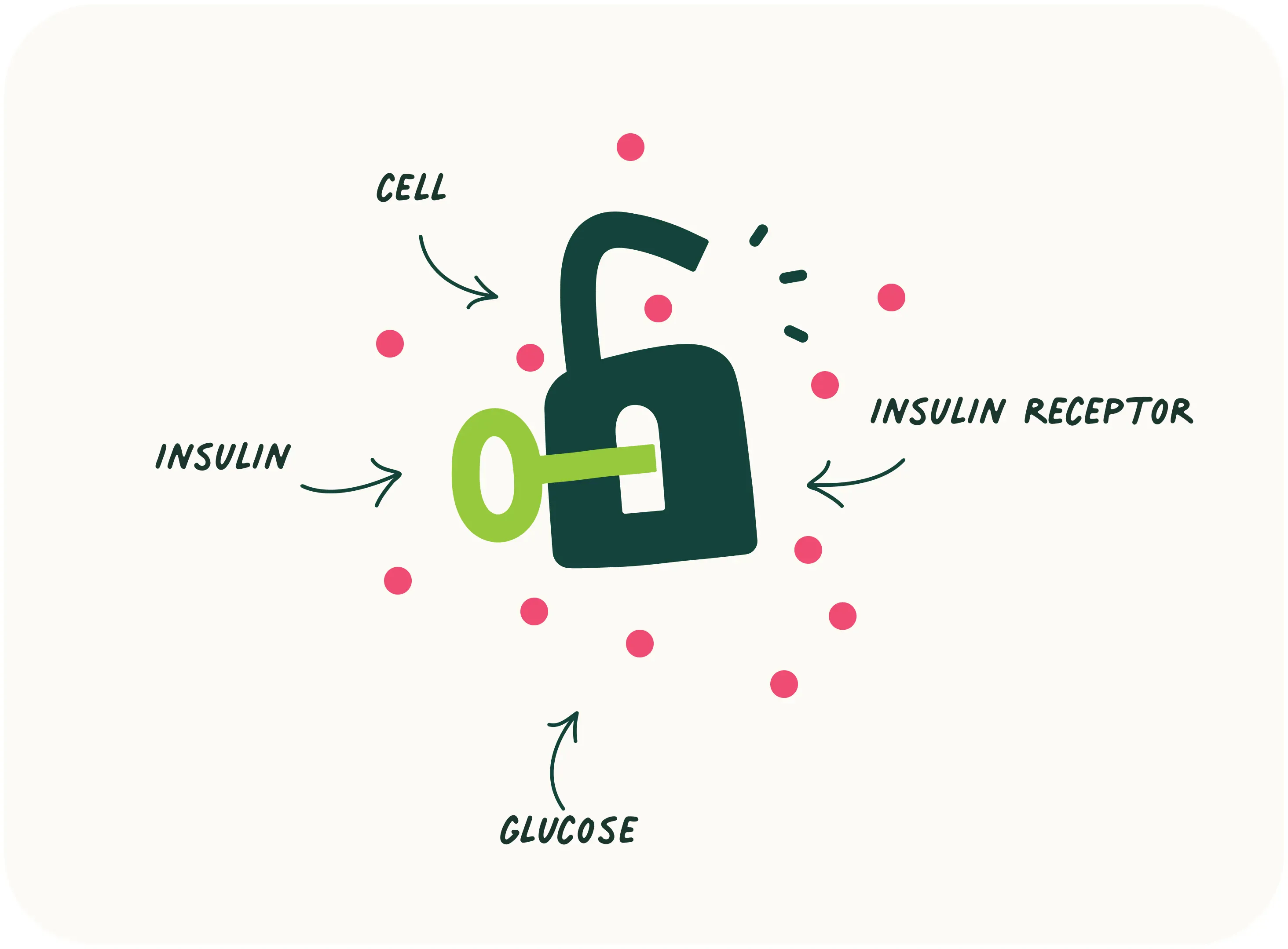5 signs of insulin resistance

Insulin resistance is when your body’s cells become less responsive to insulin, the hormone that keeps your blood sugar in check. As a result, your pancreas cranks out more insulin to keep blood sugar levels stable. But over time, this can lead to higher insulin and blood sugar levels, which increases the risk of type 2 diabetes and other metabolic health issues.
Think of it like a traffic jam—your body’s trying to keep everything moving, but it’s not working as smoothly as it should. So how do you know if insulin resistance is creeping up? Keep reading to discover the 5 signs that could mean your body’s insulin system isn’t working as efficiently as it should.
What is insulin and what does it do?
Here’s a quick run-down of how it supports blood sugar levels:
- As our body breaks down food, glucose (AKA sugar) enters the bloodstream, increasing blood sugar and triggering insulin to be released.
- Insulin is like a “key” - its job is to unlock the doors so our blood can move the sugar into our cells where it is used.
- If the body is insulin resistant, the key doesn’t work as well.

While insulin resistance is increasingly common (around 30% of Australian adults), it often develops without obvious symptoms. Knowing the signs may help you open a conversation with your healthcare professional for further investigation. Here’s what to look out for.
Sign 1: Increased hunger
When cells become resistant to insulin, the body compensates by producing more, which can lead to elevated hunger and cravings—especially for carbs and sweets. These cravings happen because sugar remains in the bloodstream rather than being effectively used by cells.
Sign 2: Feeling tired
When cells are resistant to insulin, they aren’t able to efficiently use sugar for energy, which may lead to feelings of fatigue. The body is essentially unable to “refuel” properly, leaving you feeling drained.
Sign 3: Increased waistline
When insulin levels are consistently high, the body tends to store more fat, especially in the abdominal region. Studies suggest that fat around the waist may have a stronger link to health risks compared to fat stored in other areas. So, waist measurements may be a more insightful measure to track rather than weight. You can measure your waist at home using this guide, but for the most accurate reading, visit your healthcare professional.
Sign 4: Dark patches of skin in the armpit or neck
Dark patches of skin called “acanthosis nigricans” may appear on the neck, armpits or groin area. It’s often associated with elevated insulin levels and can be one of the more visible signs of insulin resistance.
Sign 5: Increased thirst and urination
Insulin resistance leads to higher blood sugar levels. When sugar builds up in the bloodstream, the kidneys work harder to remove it via the urine. This process requires more water, often resulting in dehydration, which signals the brain to increase thirst.
Is insulin resistance the same as diabetes?
Not exactly. Insulin resistance means the body is less responsive to insulin, causing insulin levels to rise. Over time, this may lead to higher blood sugar levels which increases the risk of type 2 diabetes.
Can you prevent insulin resistance?
Insulin resistance is largely influenced by lifestyle factors, meaning simple changes may help to reduce the risk as well as improve insulin sensitivity (sensitivity = the opposite of resistance), such as:
- Regular physical activity, particularly resistance and aerobic exercises, improves insulin sensitivity .
- Balancing your plate at each meal with whole grains, lean protein, healthy fats and loads of veggies helps to keep blood sugar balanced.
- Managing stress and getting sufficient sleep each night are additional ways to keep insulin resistance at bay.
- Spices (like cinnamon) and supplements (like Berberine and Chromium) may also provide further blood sugar support.
Insulin resistance diagnosis
If you suspect insulin resistance, a healthcare professional can perform several tests. The most common are fasting glucose tests, fasting insulin tests, and Haemoglobin A1c test (HbA1c), which measures average blood sugar levels over several months. Your healthcare professional may also look at blood pressure, cholesterol and triglycerides (a type of fat) in the blood. It’s important to recognise the signs of insulin resistance as it is closely connected to Metabolic Syndrome, which is a cluster of risk factors that lead to chronic disease.
The bottom line
Being mindful of blood sugar levels isn’t just for individuals with diabetes. Blood sugar is a critical component for our bodies to function properly, to support metabolic health and just generally feel our best!
Balanced nutrition, regular exercise, stress management, and mindful eating helps to reduce the risk of insulin resistance and support long term metabolic health. If you need more tailored advice, visit your healthcare professional.
Related reads:
Reviewed by the Healthylife health experts December 2024.
This article is for informational purposes only and does not provide medical advice, diagnosis, or treatment. Any information published on this website or by this brand is not intended as a substitute for medical advice. If you have any concerns or questions about your health you should consult with a health professional.
